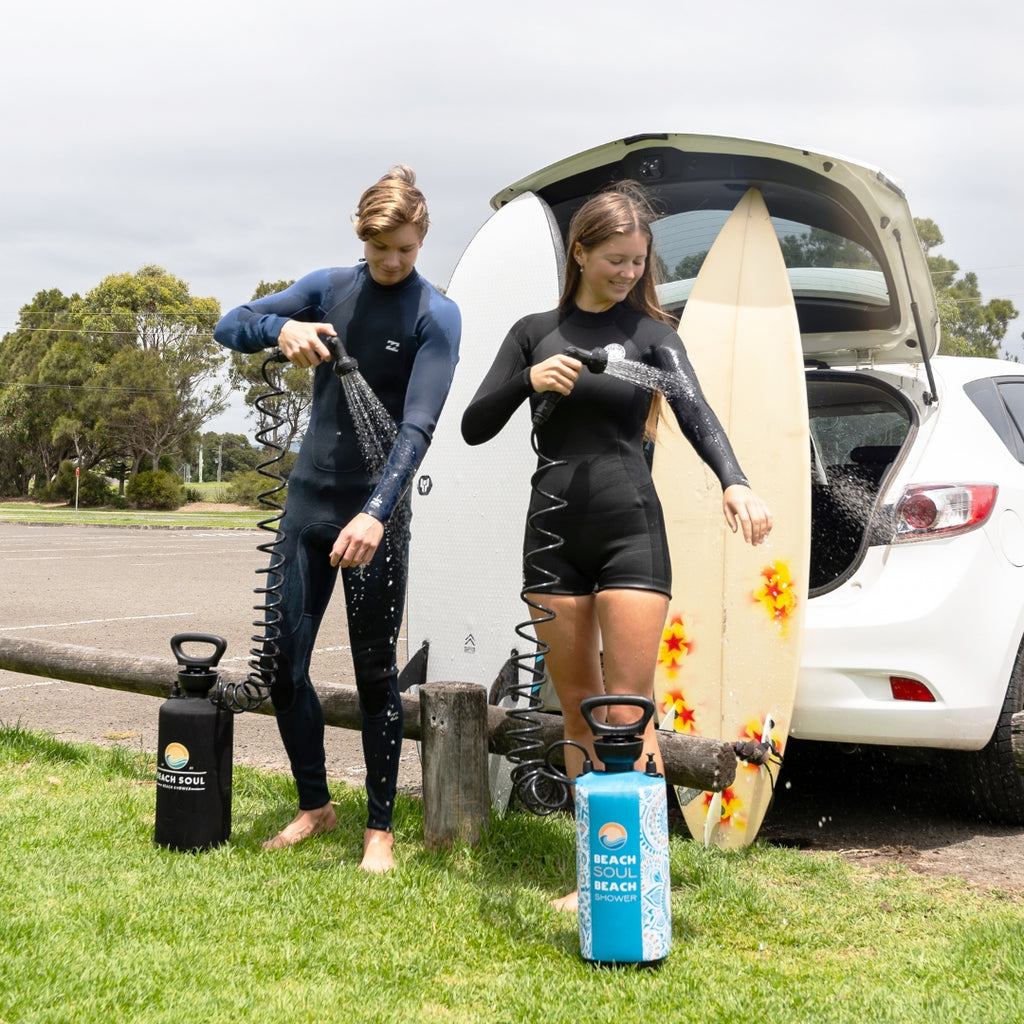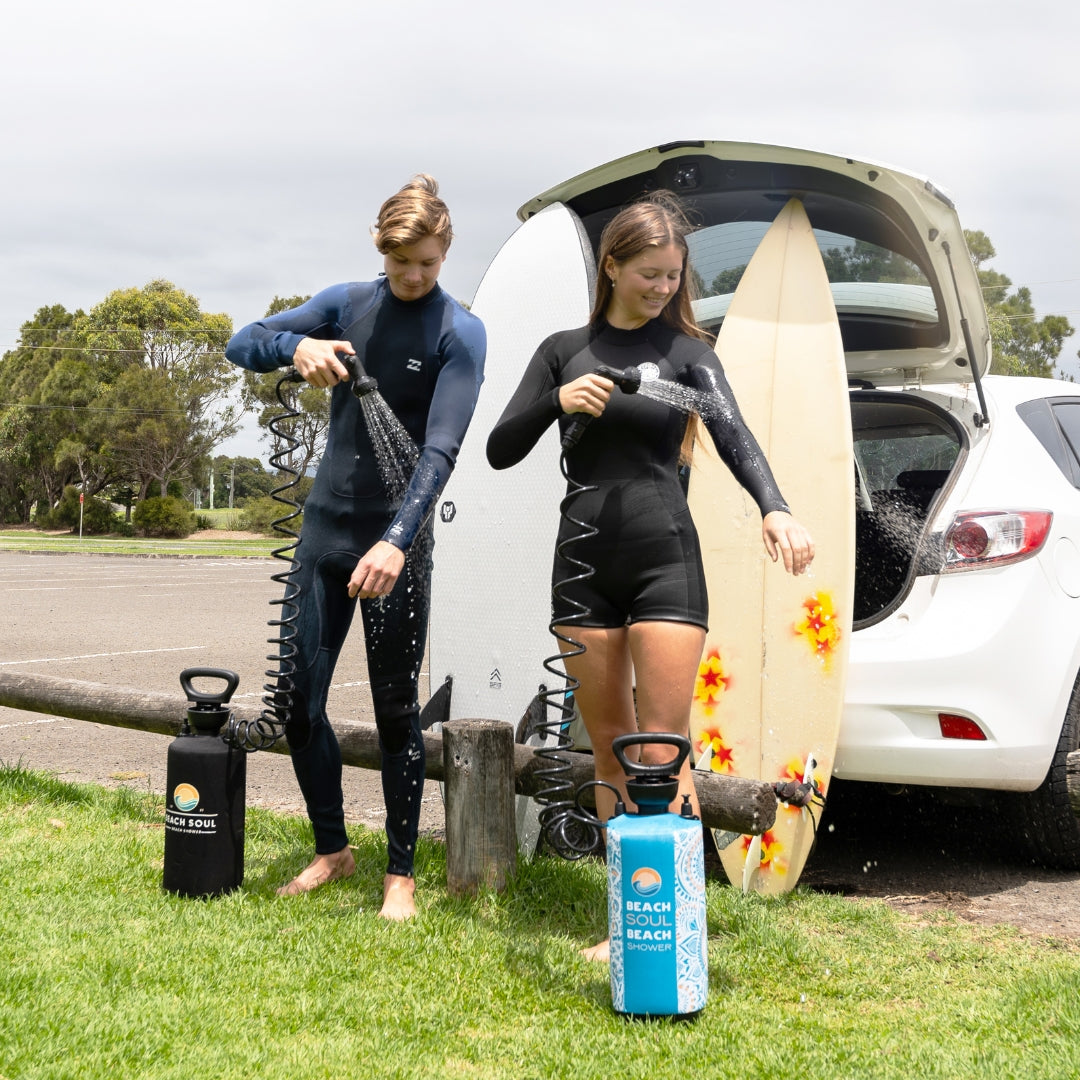
Is your suit starting to stink worse than a hunk of blue cheese wrapped in seaweed and left in the baking hot sun? Newsflash! You need to learn how to wash a wetsuit so that you don't become the smelliest surfer in the lineup.
Besides just rinsing away odd smells though, knowing how to clean wetsuits properly will help to prolong their lifespan, keeping you in the water for longer without having to fork out for a new one.
So, if you want to keep your second skin looking and feeling fresh, read on for our top tips on how to wash a wetsuit and wet gear post-surf!
What are wetsuits made from?
Most wetsuits are typically fashioned from neoprene–a synthetic rubber celebrated for its insulation properties–which traps a thin layer of water and uses your body heat to warm it.
Besides regular petroleum-based neoprene, eco-friendly options like plant-based rubber (Yulex) and limestone neoprene are also available.

The basics: Caring for your wetsuit
Understanding the importance of caring for wetsuits is crucial for every surfer. Just like your surfboard, your wetsuit is a trusty companion in the waves and deserves some tender loving care. Here are a few basic must-knows when it comes to rinsing your wetsuit or wet gear.
- Not looking after your wetsuit can cause it to deteriorate faster
- Exposure to sunlight, saltwater, sand and even your own sweat can break down the neoprene over time
- Sharp objects or rough surfaces might cause holes or tears if you're not careful (i.e. you get changed on rugged bitumen or dirt instead of using a bag and mat)
- One of the simplest yet most effective ways to maintain your wetsuit's condition is to rinse it with freshwater after every surf
- Hang it inside out at first. Then, once the inside is dry, turn it out and leave it to finish drying
- Never hang your wetsuit in direct sunlight as UV rays can damage the rubber or seams and cause them to lose elasticity
- Always store wetsuits using a broad wire hanger (or specific wetsuit hanger) to avoid creasing and promote air flow. Avoid hanging over brick walls or other rough surfaces and never leave your wetsuit folded for long periods
Why are saltwater and sunlight so damaging?
Saltwater and sunlight, while being essential aspects of your surfing experience, can surprisingly be harmful to wetsuits.
Saltwater, if not rinsed off properly, can cause the wetsuit material to stiffen and crack over time. The salt crystals embedded within the fabric intensify the process of wear and tear, reducing the lifespan of your gear.
Sunlight (specifically the UV rays) also plays its part in damaging your wetsuit. Exposure to these rays can cause the neoprene to degrade which leads to a loss of flexibility--a crucial attribute for manoeuvrability while surfing.
Additionally, the heat from the sunlight can cause the wetsuit colours to fade and the material to become brittle. This makes wetsuits more prone to ripping or tearing while you’re trying to put them on/take them off.

How to wash a wetsuit and wet gear (without reducing its lifespan)
Step 1 / Flush Your Wetsuit
After emerging from the sea, make sure to flush your wetsuit with freshwater as soon as possible.
Saltwater and sand left on the material can cause it to deteriorate faster, so it's crucial to rinse it promptly. A portable shower comes in handy for this task, allowing you to efficiently hose down your suit before you even leave the beach.
Step 2 / Deep Cleaning (optional)
For a more thorough clean, soak your wetsuit in a tub filled with fresh water for at least 20 minutes.
You can also use a specialised wetsuit cleaner to help eliminate odours and remove any stubborn salt or sand particles.
Remember, you should never use hot water, bleach, shampoo or harsh detergents, as these can damage the neoprene and seams. If you do undertake a deep clean, give it another quick rinse under freshwater after removing it from the tub.
Step 3 / Drying
Hang your wetsuit inside out to allow the inside to dry first.
This will help prevent any nasty smells from forming. Once the inside is dry, you can then turn it right-side-out to let the outside dry as well. It's critical to never dry your wetsuit in direct sunlight, as UV rays can damage the material.
Step 4 / Storing
Lastly, when storing your wetsuit, use a wide hanger to avoid creases.
A dry, cool and shaded place is best for storage to prevent your wetsuit from deteriorating due to sunlight or heat exposure.
Having a wetsuit hanging rack in the garage is a great idea. However, if that's not an option, just make sure to avoid storing it in plastic bags or damp areas where mildew can grow... and whatever you do, don't leave it balled up in the ute tray or car boot!

FAQ about washing, drying and storing wetsuits
Q. Can you put a wetsuit in a washing machine?
No, you should never put your wetsuit in the washing machine as it can damage the material and reduce its lifespan. A quick rinse with fresh water is sufficient for regular care.
Q. How do you get rid of funky smells?
Regularly rinsing your wetsuit and using a specialised neoprene cleaner can help with odour control. Just be careful not to use harmful chemicals like bleach. This can break down your wetsuit quickly–much faster than salt water or sunlight ever will!
Q. What's the best way to dry a wetsuit?
The best way to dry a wetsuit is by air drying it. If you want to cut down the drying time, use a towel to absorb some of the moisture and then hang it up to finish drying. Just make sure to never use a dryer or other heat source as this can damage neoprene.
Q. Can I store my wetsuit wet?
No. A wet wetsuit stored in a damp or warm environment can develop mildew and bacteria, leading to unpleasant smells and potential health hazards. Make sure to always dry your wetsuit completely before storing it away.
Q. Should I dry my wetsuit inside out?
Yes! Start by hanging your wetsuit inside out to allow the inside (where the water tends to be absorbed by the inner lining) to dry first.
Q. Can I fold my wetsuit when storing it?
Folding a wetsuit during storage isn't advisable. Not only does it cause creasing, but it also puts undue stress on the material. Use a wide hanger to avoid any damage to your wetsuit.
Final thoughts
You don't need to be an experienced surfer to know how to wash a wetsuit. In fact, we'd argue that most lifelong surfers still don't know how to care for their neoprene.
If you want your wetsuit to hold up for more than one season though, proper care is essential. Keep it out of the sun, store it in a dry but cool place and take the time to rinse it after surfing.
Follow these simple steps to ensure that your wetsuit stays in perfect condition and continues keeping you warm for many more surf sessions to come!



Share:
Our Beach Showers Are Going to the Moon!
Can a Surf Shower Extend the Lifespan of Your Wetsuit?